vegetables
now browsing by tag
An Interview With Harvey Diamond-Fit For Life!
Harvey Diamond (he has dropped the Dr.) was a pioneer in alternative health with his book Fit For Life way back in 1985 before computers and we all had to go to the local library to look up things.I read his book and for me, it was a real eye-opener. I think mainly because it just made commonsense. I was so in love witht his book that I gave many copies out as gifts. I’m sure 90% of the gift receivers thought I was crazy.
Now here it is 2014 and I have discovered that my hero, Harvey Diamond, lives is Sarasota so I decided to give it a chance and called him to request a phone interview for this health blog. I left a cheerful message on his voice mail and hoped for the best. Imagine my surprise when I saw “Harvey Diamond” on the caller ID a few hours later. We decided on a time in a couple of days and as promised, he called me back for what I told him would be 15 or 20 minutes interview.
Before the interview I carefully scripted out my questions on paper with plenty of room to write down his replies between my questions. We started off with me saying how honored I was that he agreed to the interview and then we went right into a conversation like we were old friends. I would normally write the interviewees’ answers down but we both got off on tangents…scripted questions out the window.
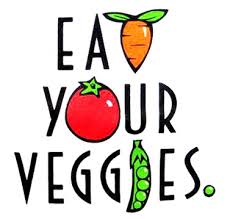 I explained to him that I was always interested in staying healthy and now was diagnosed with Hashimoto Thyroiditis. (Hashimoto Thyroiditis is a autoimmune disease that attacks the thyroid.) He said he just spoke to a very famous person yesterday and was giving her advice on how to deal with Hashimoto. (These are not his words exactly for I am paraphrasing but if I use italics it is a direct quote..) He told me, “You know if you have Hashimoto what things you have to stay away from. Soy and Fluoride.” I told him I did and also cut out gluten. But I didn’t want to talk about me so I moved on with the questions and Harvey (he told me to call him Harvey) is so enthusiastic and energetic in talking about health that he can go on for about 5 minutes in rapid fire speaking with statistics and sometimes funny sayings that made me burst out laughing like “I’d rather step in front of a truck than eat….”
I explained to him that I was always interested in staying healthy and now was diagnosed with Hashimoto Thyroiditis. (Hashimoto Thyroiditis is a autoimmune disease that attacks the thyroid.) He said he just spoke to a very famous person yesterday and was giving her advice on how to deal with Hashimoto. (These are not his words exactly for I am paraphrasing but if I use italics it is a direct quote..) He told me, “You know if you have Hashimoto what things you have to stay away from. Soy and Fluoride.” I told him I did and also cut out gluten. But I didn’t want to talk about me so I moved on with the questions and Harvey (he told me to call him Harvey) is so enthusiastic and energetic in talking about health that he can go on for about 5 minutes in rapid fire speaking with statistics and sometimes funny sayings that made me burst out laughing like “I’d rather step in front of a truck than eat….”
I was interested on how his book Fit For Life became such a sensation. Harvey said the timing was right for a health book and he was a guest on all the talk shows as in Oprah, etc. “Yes, but you just don’t get on Oprah by calling her up and say can I be on your show?” I said.
As a beginner writer and someone who also likes to help indie authors promote their books, this info was important to me. Was it just word of mouth that kept Fit For Life on the New York Times’ Best Seller List for 40 consecutive weeks? So, I circled back with my questions on how he marketed his book.
“Oh, I had a friend that was on the Eight is Enough TV show, Joannie Prather, and her agent was with William Morris Agency and she said she would put my manuscript on his desk. He liked it and passed it on to Warner Books and the rest is history.”
I asked him what he was doing for employment at that time in 1985. “Nothing, I was borrowing money from friends and working on my book with heart and soul. I had a feeling it was going to be well received.” That was in 1985 and since Fit For Life he has written 8 more books his latest Fit For Life-A New Beginning. He said, “It’s my best book so far.”
He told me that his website had a lot of information and I brought it up on my laptop as we talked. I noticed that there were a lot of supplements on the site. “No!” said Harvey emphatically. They are enzymes which are very important for your digestive system. I wouldn’t eat cooked food without taking one first. I don’t believe in supplements. Did you know Americans have the most expensive urine?”
Some of the other things he pointed out:
- USA spends 3 trillion a year on health care
- We are a pill-taking society
- People are overfed and undernourished
- Still believes in water fasting for health
- A mostly raw food diet is important
- You should have a good partnership with your body for health
- He never eats sugar or believes in dieting
He claims to not be perfect (who is) and will occasionally have a slice of pizza. Aha! I thought I had him with that one. “But that has a high-glycemic index which the body converts to sugar!”
“Oh, I don’t go along with that guy (guy?) who talks about the low glycemic way of eating. I mean according to that chart a watermelon has a higher glycemic index than a bowl of ice cream. I love watermelon! A bowl of ice cream is not better for you than a piece of watermelon.” Point taken.
We talked about the naysayers he said that attacked him when his book first came out and some are now agreeing, writing or lecture on the same topic they were so against in the 80s. I told him that I was juicing and that was even a controversial topic between the juicers and the smoothies. “There will always be someone to contradict you,” he said.
“Do you really think there is a cure for cancer?” I hopefully said.
“I thing the medical community dangles the word “cure” like a carrot in front of a horse. I think the word “care” is more important.”
I said, “Why don’t more people work on the care of their health before they get cancer? I want to do something to prevent getting cancer now so I don’t have a cancer diagnosis in the future.”
“People believe that the medical profession is going to cure them when they get called into the doctor’s office with the bad news.” Harvey continued with, ” “Chemotherapy is actually mustard gas which causes cancer. It’s like trying to stop a freight train with a fly swatter.”
I had heard that Harvey had been suffering from the effects of Agent Orange that he was exposed to while serving in the Vietnam War. He is 69 years old now and can hardly move his arms and walks with a distinct limp. He told me he was one of the few survivors from Agent Orange that is still alive and can walk. Something he claims is because of his mostly raw food diet.
Well, we finished the interview in just shy of an hour. He was fascinating to talk to and I promised to send him my book, The Insomnia Cure-How I Kicked Insomnia Out of My Bed! He said, “that’s a good title.”
Thank you, Harvey!
From http://www.harveydiamond.com
Harvey Diamond is a Health & Wellness Advocate and New York Times #1 Bestselling Author who has been studying and teaching the principles of healthful living for over 40 years. He is credited as a pioneer in helping shift people toward healthier eating. He has helped millions of people worldwide to not only dramatically improve their health, but also to overcome serious, catastrophic disease, including cancer.
His FIT FOR LIFE books have sold nearly 14 million copies in 33 languages and are read in over 80 countries. FIT FOR LIFE held the #1 position on the prestigious New York Times Bestseller list for an unprecedented 40 consecutive weeks. It was the fastest selling book of its kind in history.
Books by Harvey Diamond
Terry Ryan is a health blogger and lives in Sarasota, FL with her husband Kenan.
The Agent Orange Victims Fund (AGORAVIF) works to support families and children affected by Dow’s chemicals. You can find out more and donate to their fund by visiting www.vnrc.org.vn.
Amazing Turmeric
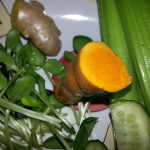
 Turmeric has been a main spice ingredient in Indian food and I may have purchased the orange colored spice once in my life and left it in the spice cabinet for years where it hardened and I threw it in the trash. To tell you the truth I never knew what to do with it. But now that I am reaching Master Juicer title (self named) I have been researching the different herbs and vegetables to super-size my juice recipes turning me and my followers into SUPER HUMANS!!! Da da da TA! So here is what I found out about turmeric.
Turmeric has been a main spice ingredient in Indian food and I may have purchased the orange colored spice once in my life and left it in the spice cabinet for years where it hardened and I threw it in the trash. To tell you the truth I never knew what to do with it. But now that I am reaching Master Juicer title (self named) I have been researching the different herbs and vegetables to super-size my juice recipes turning me and my followers into SUPER HUMANS!!! Da da da TA! So here is what I found out about turmeric.
Turmeric has a peppery, warm and bitter flavor and a mild fragrance slightly reminiscent of orange and ginger, and while it is best known as one of the ingredients used to make curry, it also gives ballpark mustard its bright yellow color.
A Potent, Yet Safe Anti-Inflammatory
The volatile oil fraction of turmeric has demonstrated significant anti-inflammatory activity in a variety of experimental models. Even more potent than its volatile oil is the yellow or orange pigment of turmeric, which is called curcumin. Curcumin is thought to be the primary pharmacological agent in turmeric. In numerous studies, curcumin’s anti-inflammatory effects have been shown to be comparable to the potent drugs hydrocortisone and phenylbutazone as well as over-the-counter anti-inflammatory agents such as Motrin. Unlike the drugs, which are associated with significant toxic effects (ulcer formation, decreased white blood cell count, intestinal bleeding), curcumin produces no toxicity.
“Curcumin may provide an inexpensive, well-tolerated, and effective treatment for inflammatory bowel disease (IBD) such as Crohn’s and ulcerative colitis, recent research suggests.”
Relief for Rheumatoid Arthritis
Clinical studies have substantiated that curcumin also exerts very powerful antioxidant effects. As an antioxidant, curcumin is able to neutralize free radicals, chemicals that can travel through the body and cause great amounts of damage to healthy cells and cell membranes. This is important in many diseases, such as arthritis, where free radicals are responsible for the painful joint inflammation and eventual damage to the joints. Turmeric’s combination of antioxidant and anti-inflammatory effects explains why many people with joint disease find relief when they use the spice regularly. In a recent study of patients with rheumatoid arthritis, curcumin was compared to phenylbutazone and produced comparable improvements in shortened duration of morning stiffness, lengthened walking time, and reduced joint swelling.
Cancer Prevention
Curcumin’s antioxidant actions enable it to protect the colon cells from free radicals that can damage cellular DNA—a significant benefit particularly in the colon where cell turnover is quite rapid, occurring approximately every three days. Because of their frequent replication, mutations in the DNA of colon cells can result in the formation of cancerous cells much more quickly. Curcumin also helps the body to destroy mutated cancer cells, so they cannot spread through the body and cause more harm. A primary way in which curcumin does so is by enhancing liver function. Additionally, other suggested mechanisms by which it may protect against cancer development include inhibiting the synthesis of a protein thought to be instrumental in tumor formation and preventing the development of additional blood supply necessary for cancer cell growth.
Turmeric and Onions May Help Prevent Colon Cancer
Curcumin, a phytonutrient found in the curry spice turmeric, and quercitin, an antioxidant in onions, reduce both the size and number of precancerous lesions in the human intestinal tract, shows research published in the August 2006 issue of Clinical Gasteroenterology and Hepatology.
Five patients with an inherited form of precancerous polyps in the lower bowel known as familial adenomatous polyposis (FAP) were treated with regular doses of curcumin and quercetin over an average of six months. The average number of polyps dropped 60.4%, and the average size of the polyps that did develop dropped by 50.9%.
FAP runs in families and is characterized by the development of hundreds of polyps (colorectal adenomas) and, eventually, colon cancer. Recently, nonsteroidal anti-inflammatory drugs (NSAIDs such as aspirin, ibuprofen) have been used to treat some patients with this condition, but these drugs often produce significant side effects, including gastrointestinal ulcerations and bleeding, according to lead researcher Francis M. Giardiello, M.D., at the Division of Gastroenterology, Johns Hopkins University.
Previous observational studies in populations that consume large amounts of curry, as well as animal research, have strongly suggested that curcumin, one of the main ingredients in Asian curries, might be effective in preventing and/or treating cancer in the lower intestine. Similarly, quercetin, an anti-oxidant flavonoid found in a variety of foods including onions, green tea and red wine, has been shown to inhibit growth of colon cancer cell lines in humans and abnormal colorectal cells in animals.
In this study, a decrease in polyp number was observed in four of five patients at three months and four of four patients at six months.
Each patient received curcumin (480 mg) and quercetin (20 mg) orally 3 times a day for 6 months. Although the amount of quercetin was similar to what many people consume daily, the curcumin consumed was more than would be provided in a typical diet because turmeric only contains on average 3-5 % curcumin by weight.
While simply consuming curry and onions may not have as dramatic an effect as was produced in this study, this research clearly demonstrates that liberal use of turmeric and onions can play a protective role against the development of colorectal cancer. And turmeric doesn’t have to only be used in curries. This spice is delicious on healthy sautéed apples, and healthy steamed cauliflower and/or green beans and onions. Or, for a flavor-rich, low-calorie dip, try adding some turmeric and dried onion to creamy yogurt.
(Source: http://www.whfoods.com/genpage.php?tname=foodspice&dbid=78)
So, there you have it. I, for the first time, added some fresh turmeric to my juice today. Wow! It was one 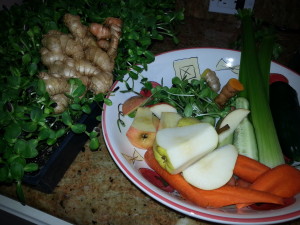 spice combo. Here is my recipe for today: (everything OF COURSE organic)
spice combo. Here is my recipe for today: (everything OF COURSE organic)
- Apple
- Pear
- Celery
- Carrots
- Sunflower sprouts
- Slice of tumeric
- Knob of ginger
- Cucumber
I made about 16 ounces and shared with my husband. I’m trying to convert him and I think he is coming around.
Happy juicing!
 Terry Ryan is a blogger and health enthusiast.
Terry Ryan is a blogger and health enthusiast.
Juicing For Weight Loss

|
Juicing vs. Smoothies
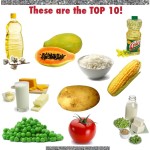
 JUICING VS. BLENDING: WHICH ONE IS BETTER?
JUICING VS. BLENDING: WHICH ONE IS BETTER?
Here is a short comparison that explains the differences between the two as well as some of the specific benefits of each.
What’s The Difference?
JUICING
Without all the fiber, your digestive system doesn’t have to work as hard to break down the food and absorb the nutrients. In fact, it makes the nutrients more readily available to the body in much larger quantities than if you were to eat the fruits and vegetables whole.This is especially helpful if you have a sensitive digestive system or illness that inhibits your body from processing fiber. The fiber in produce helps slow down the digestive process and provides a steady release of nutrients into the blood stream. Jason Vale calls juicing “A nutrient express!” Freshly squeezed vegetable juices form part of most healing and detoxification programs because they are so nutrient rich and nourish and restore the body at a cellular level.
A word of caution: When you remove the fiber from the produce, the liquid juice is absorbed into your blood stream quickly. If you are only juicing fruits, this would cause a rapid spike in blood sugar and unstable blood sugar levels can lead to mood swings, energy loss, memory problems and more!
Fiber is also filling and without fiber in the juice, some people tend to get hungry again quickly.
Smoothies
Unlike juices, smoothies consist of the entire entire fruit or vegetable, skin and all and contain all of the fiber from the vegetables.
However, the blending process breaks the fiber apart (which makes the fruit and vegetables easier to digest ) but also helps create a slow, even release of nutrients into the blood stream and avoids blood sugar spikes. Smoothies tend to be more filling, because of the fiber, and generally faster to make than juice, so they can be great to drink first thing in the morning as your breakfast, or for snacks throughout the day.
By including the fiber in your smoothie, the volume will increase. Also, you can pack more servings of fruits and veggies into a single serving of juice than you can into a smoothie.
1. It’s best not to combine fruits and vegetables (unless it’s apple). This can affect how well your digestive enzymes function.
This doesn’t seem to matter too much in green juices and smoothies, but vegetables like carrots, beetroots, broccoli and zucchini don’t combine well with fruit due to their high starch content. In his book Food Combining Made Easy, Dr. Herbert Shelton explains that starchy foods have to be eaten alone because starches are digested with enzymes different from those used for any other food group. Combining starchy foods with fruit may cause fermentation and gas. However, Dr. Shelton found that green leafy veggies combine well with pretty much everything.
2. Try to drink your juice or smoothie straight away. After 15 minutes, light and air will destroy much of the nutrients. If you can’t drink it straight away, transfer to a dark airtight container until you’re ready.
Using The Right Equipment
To get the most benefit from your juices and smoothies, it’s important to use the right equipment. Invest in a good-quality juicer. Cheaper, centrifugal juicers introduce heat and oxygen and destroy the enzymes and nutrients in your fruits and vegetables. While it may cost you a bit more initially, a premium cold-press juicer will produce a superior-quality juice and allow you to extract more from your fruit and vegetables, saving expense in the long-term.
The machines themselves will also generally last longer. In contrast to the rough extraction of centrifugal juicers, mastication or cold-press juicers compress fruit and vegetables to ‘squeeze’ out their juice.
The same goes for a blender. You want a blender that is gentle on your produce and doesn’t heat up the enzymes as it’s pulling apart the fibers. We spend money on gadgets, clothes, restaurants and other luxuries so, if you can afford it, investing in your health by buying a quality juicer or blender is totally worth it.
What Should I Look For
In A Juicer?
When we are looking for our perfect juicer here is what we look for: (Great source for this info was http://www.foodmatters.tv/juicer-buying-guide)
Centrifugal Juicers
Centrifugal juicers are commonly available in retail outlets and are the cheapest type to purchase. These machines initially extract juice by pulverizing fruit and vegetables against a round cutting blade that spins very quickly against a metal strainer. The centrifugal force generated by the spinning motion of the cutting surface separates the juice from the pulp.
- Pros: Cheaper
- Con: Not the best way to extract juice because heat may destroy nutrients.
Cold Press Juicers
These machines operate via a masticating (chewing) or cold press method to produce a superior juice to their centrifugal counterparts. In contrast to the rough extraction and high speeds of centrifugal juicers, cold press juicers operate at lower speeds and gently compress fruit and vegetables to ‘squeeze’ out their juice. While more costly, their slower and more thorough extraction rates produce a higher-quality juice, and more of it.
- Pro: Higher juice yield
- Con: Expensive
BLENDERS
Blenders are coming out of the pantries and being used as a great way to add more fruits and vegetables to your diet. Plus, it doesn’t “waste” the pulp as it is finely shredded/blended into an easily drinkable form. I know a lot of people who prefer to juice this way. They add ice and protein powders and make a pretty delectable smoothie. I wrote a blog post about Andrea who has lost 60 pounds using this kind of method to drink her veggies and fruit. She uses a Nutribullet and adds ground up flax seeds. Just looking at her you can tell it works as far as weight loss.
- Pro: Uses all of the vegetables and fruit (no left over pulp)
- Con: Assimilation of micronutrients are slowed down because it requires more of the digestive process
What to look for when choosing a juicer
- Able to easily juice all greens, herbs and grasses (with a high yield)
- Good to juice fruits, including soft varieties
- Cold pressed, to produce a superior juice
- Low speed (rpm), to minimize oxidation and produce a longer lasting juice
- Able to make nut milks
- Easy to clean
- Low noise!
Source Links:
http://www.thewellnesswarrior.com.au/2011/08/juicing-versus-blending/.
http://www.drsearswellnessinstitute.org/blog/2012/04/12/juicing-vs-blending/
A Diet Cure For Cancer? Hallelujah Diet!

 I heard about the Hallelujah Diet from my neighbor who has a relative that had cancer and was given the “prepare for death” speech from his doctor. The man went home and went on the diet and well, that was over 10 years ago, so according to him, it works? In case you have never heard of the Hallelujah Diet it is religious based and quoted by some as God’s Diet. Here is a quote from the bible: The Hallelujah Diet is based on the physical nourishment as intended from our Provider in Genesis 1:29: “And God said, Behold, I have given you every herb bearing seed, which is upon the face of all the earth, and every tree, in the which is the fruit of a tree yielding seed; to you it shall be for meat [food].”
I heard about the Hallelujah Diet from my neighbor who has a relative that had cancer and was given the “prepare for death” speech from his doctor. The man went home and went on the diet and well, that was over 10 years ago, so according to him, it works? In case you have never heard of the Hallelujah Diet it is religious based and quoted by some as God’s Diet. Here is a quote from the bible: The Hallelujah Diet is based on the physical nourishment as intended from our Provider in Genesis 1:29: “And God said, Behold, I have given you every herb bearing seed, which is upon the face of all the earth, and every tree, in the which is the fruit of a tree yielding seed; to you it shall be for meat [food].”
The Hallelujah Diet is a menu of 85% raw, uncooked, and unprocessed plant-based food, and 15% cooked, plant-based food.
The 85% Raw Portion
This portion of The Hallelujah Diet is composed exclusively of the garden foods God instructs man to eat (Genesis 1:29). The dense living nutrients found in raw foods and their juices produce abundant energy and vibrant health while satisfying our cells’ nutritional needs, controlling hunger efficiently.
- Beverages: Freshly extracted vegetable juices, BarleyMax, CarrotJuiceMax, BeetMax, and remineralized distilled water
- Dairy Alternatives: Fresh almond milk, creamy banana milk, as well as frozen banana, strawberry, or blueberry “fruit creams”
- Fruit: All fresh, as well as unsulphured organic dried fruit (limit fruit to no more than 15% of daily food intake)
- Grains: Soaked oats, raw muesli, dehydrated granola, dehydrated crackers
- Beans: Green beans, peas, sprouted garbanzos, sprouted lentils, and sprouted mung beans
- Nuts & Seeds: Raw almonds, sunflower seeds, macadamia nuts, walnuts, raw almond butter or tahini (consume sparingly)
- Oils and Fats: Extra virgin olive oil, Udo’s Oil, flaxseed oil (the oil of choice for people with cancer, except men with prostate cancer, who may be better served meeting the essential fat needs through freshly ground flaxseed), and avocados
- Seasonings: Fresh or dehydrated herbs, garlic, sweet onions, parsley, and salt-free seasonings
- Sweets: Fruit smoothies, raw fruit pies with nut/date crusts, date-nut squares, etc.
- Vegetables: All raw vegetables
- Soups: Raw soups
The 15% Cooked Portion
Cooked foods follow the raw salad at lunch or evening meals and can prove beneficial for those trying to maintain body weight.
- Beverages: Caffeine-free herb teas and cereal-based coffee alternatives, along with bottled organic juices
- Beans: Lima, black, kidney, navy, pinto, red, and white
- Dairy: Non-dairy cheese, almond milk and rice milk (use sparingly)

- Fruit: Cooked and unsweetened frozen fruits
- Grains: Whole-grain cereals, breads, muffins, pasta, brown rice, millet, etc.
- Oils: Vegan mayonnaise made from cold-pressed oils
- Seasonings: Same as the 85% portion, plus unrefined sea salt (use sparingly)
- Soups: Soups made from scratch without fat, dairy, or refined table salt
- Sweeteners: Raw, unfiltered honey, rice syrup, unsulphured molasses, stevia, carob, pure maple syrup, date sugar, agave nectar (use very sparingly)
- Vegetables: Steamed or wok-cooked fresh or frozen vegetables, baked white, yellow or sweet potatoes, squash, etc.
Food to avoid!
Watch out for these!
What most people do not realize is that almost every physical problem they experience, other than accidents, has a diet related cause.
Because our physical body is designed by God to be nourished with living (raw) foods, it is imperative that the greatest percentage of our daily food intake be composed of raw foods—and that we avoid the foods that are causing the problems in the first place.
Here are a list of foods that are excluded from The Hallelujah Diet. Although this list is far from comprehensive, using it as a guide will help you determine whether or not other foods are beneficial.
Beverages
- Alcohol
- Coffee (grain coffees like Pero and Roma are fine)
- Teas containing caffeine (caffeine-free herb teas are fine)
- Carbonated beverages and soft drinks
- All artificial and sugar containing drinks, sport drinks, and all juices containing preservatives, refined salt, sugar, and artificial sweeteners
Refined sugar suppresses the immune system and prevents its ability to protect us from germs, viruses, and bad bacteria. One 12 oz soft drink contains approximately 11 teaspoons of sugar and if consumed daily for one year, adds 15 pounds of weight.
Dairy
- All milk, cheese, ice cream, whipped toppings, and non-dairy creamers
Cow milk and cheese are some of the most dangerous foods we can place into our body. Read Dr. T. Colin Campbell’s book, The China Study for documentation (it will change your life).
Soy Milk and other Soy Products
- Most soy products should be avoided
Soy is high in estrogen. The estrogen in soy formulas has been known to cause baby girls to develop breast buds as young as two years of age, and the age of puberty, which should be past the age of 15 years, is now as early as 8, 9, and 10 years.
The growth hormones in animal flesh and dairy are also contributing to this problem. Estrogen can be a contributing factor in all female cancers, and the high protein content of soy can actually feed cancers.
Processed Fruits
- Canned and sweetened fruits
- Non-organic and sulfured dried fruits
Refined Grains
- Refined, bleached flour products, most cold breakfast cereals, and white rice
Refined grains are devoid of fiber and thus one of the leading causes of constipation. Animal-source foods are also totally devoid of fiber.
All Meats and Eggs
- Beef, pork, fish, chicken, eggs, turkey, hamburgers, hot dogs, bacon, sausage, bologna, etc.
All animal-source foods are harmful to the body and are the cause of up to 90% of all physical problems. Eliminating animal source foods can practically eliminate the fear of having a heart attack, stroke, cardiovascular problems, cancer, diabetes, osteoporosis, heartburn, gout, acid stomach, and the list goes on and on.
Certain Nuts and Seeds
- All roasted and/or salted seeds and nuts
Peanuts in particular are not a nut but a legume, and very difficult to digest.
Certain Oils
- All lard, margarine, shortenings, and anything containing hydrogenated oils or trans fats
Certain Seasonings
- Refined table salt and any seasonings containing it
Unlike mineral-rich unrefined salt, which is beneficial, refined table salt is devoid of such minerals, containing 97% to 99% sodium chloride. It is a leading cause of high blood pressure. Celtic or Eden Sea Salt, a natural, unrefined salt from the sea, is a good choice.
Certain Soups
- Any canned, packaged, or creamed soups containing salt or dairy products
Certain Sweets
- All refined white or brown sugar (brown sugar is simply refined white sugar with some molasses added for color)
- Sugar syrups
- Chocolate (carob is a wonderful chocolate substitute)
- Candy, gum, cookies, donuts, cakes, pies, or other products containing refined sugars or artificial sweeteners
Acceptable sweeteners include raw unfiltered honey, stevia, agave nectar, and pure maple syrup (use any of these sparingly).
Processed Vegetables
- All canned vegetables with added salt or preservatives
- Vegetables fried in oil
All Drugs
Though these are not foods, most are addictive and very destructive within the body:
- Alcohol
- Nicotine
- Caffeine
- Marijuana, cocaine, heroin, etc.
- Many over the counter and doctor-prescribed drugs
IMPORTANT: You must always consult with your doctor who is treating you for your serious illness including the Hallelujah Diet and do not discontinue any prescriptions without your doctor’s consent.
For more info on the Hallelujah Diet you can Google it or check out this website. http://www.hacres.com/Click here for the diet Book The Hallelujah Diet





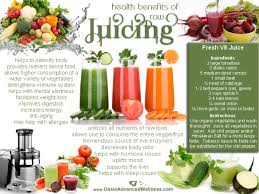
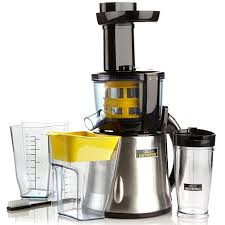
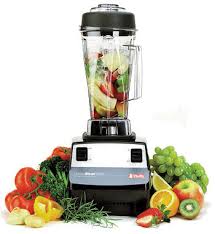
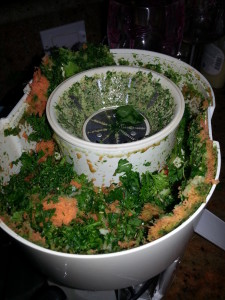
 D5 Creation
D5 Creation